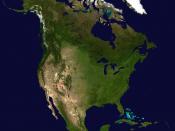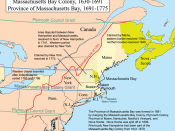Many peoples have contributed to the development of the United States of America, a vast nation that arose from a scattering of British colonial outposts in the New World. The first humans to inhabit the North American continent were migrants from northeast Asia who established settlements in North America as early as 8000 BC and possibly much earlier (see NORTH AMERICAN ARCHAEOLOGY). By about AD 1500 the native peoples of the areas north of the Rio Grande had developed a variety of different cultures (see INDIANS, AMERICAN). The vast region stretching eastward from the Rocky Mountains to the Atlantic Ocean was relatively sparsely populated by tribes whose economies were generally based on hunting and gathering, fishing, and farming.
VIKINGS explored the North American mainland in the 10th and 11th centuries and settled there briefly (see VINLAND). Of more lasting importance, however, was the first voyage (1492-93) of Christopher COLUMBUS, which inaugurated an age of great European EXPLORATION of the Western Hemisphere.
Various European states (including Spain, France, England, the Netherlands, and Portugal) and their trading companies sent out expeditions to explore the New World during the century and a half that followed.
The Spanish claimed vast areas, including Florida, Mexico, and the region west of the Mississippi River, although they concentrated their settlement south of the Rio Grande. The French explored much of the area that became Canada and established several settlements there. Of most significance, however, for the subsequent development of the United States, was the English colonization of the region along the Atlantic coast.
BRITISH COLONIES IN NORTH AMERICAAt the end of the period of turmoil associated with the Protestant Reformation in England, the English people became free to turn their attention to some other matters and to seek new opportunities outside their tiny island. Internal stability under...


